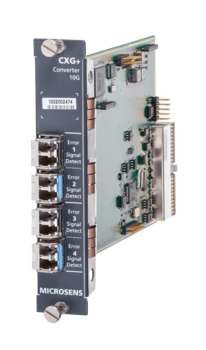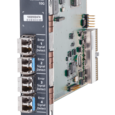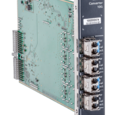The modular optical transceivers for the CXG+ card are available for transmission rates of up to 8G or 10G Fibre Channel as well as for up to 10G with Ethernet. This offers the users maximum flexibility in the configuration of their networks. In total, 10 free slots are available on the MSP 1400 chassis, which can be equipped with application modules. The double transponder card increases the total number of usable channels in a rack to 20 and significantly optimises the price-performance ratio.
Like all components of the MSP platform, the new CXG+ modules can simply be configured and managed in Web-based mode over the Microsens Network Management Platform (NMP) or via the standard protocol SNMP.








 PDF File
PDF File





